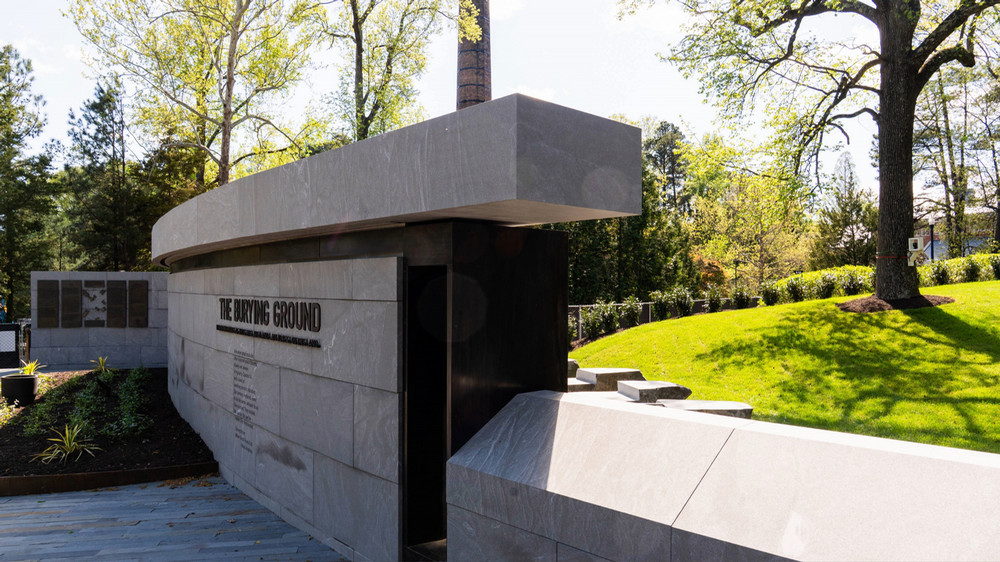The Burying Ground Memorial honors those laid to rest on and around a hillside overlooking Little Westham Creek and the generations of enslaved individuals whose lives are woven into the history of the surrounding land. In 1910, Richmond College (now the University of Richmond) acquired the first parcel of this land that is now its campus.
Explore the Memorial

Learn about design elements and symbolism at the Burying Ground Memorial, including the use of stone, plantings, and portraiture.

Find information about enslavement history, land transitions, and desecrations of the Burying Ground during development of the University of Richmond campus.

The memorial, located on the campus of the University of Richmond, is open daily from dawn until dusk. Get directions and parking information.

Brief Timeline
Pre-18th Century
Indigenous stewardship over thousands of years is followed by English colonial control. In 1619, the first recorded sale in English-controlled North America of kidnapped Africans begins nearly 250 years of exploitation of enslaved individuals in Virginia. Colonial officials disburse large land tracts to elite Virginia planters.
1702 to 1865
In 1702, a colonial official grants the land now home to the University of Richmond to its first individual owner. Over the following 150 years, hundreds of adults and children are enslaved or held through “slave hire” by a series of owners of the land. Their forced labor occurred in domestic, agricultural, industrial, commercial, and skilled labor settings. In 1865, American slavery ends with the defeat of the Confederacy in the U.S. Civil War.
1865 to 1912
Some who were once enslaved on area plantations buy land and form communities in the vicinity. Land tracts containing the Burying Ground are transferred numerous times. Owners include an African American organization and a short-lived amusement park. Turn of the century records refer to the existence and location of a “negro burying ground.” Richmond College (precursor to the University of Richmond) searches for a new campus, and in 1910, acquires land that includes the Burying Ground, and plans construction of roads and buildings.
1912 to mid-1950s
Campus development and later projects result in three known instances of grave disturbances. Disinterred human remains, described as those of enslaved people in multiple sources, are reburied by the institution at locations now unknown.
2018 to 2025
Research recovers details of connections between the land and slavery, the Burying Ground site, and grave desecrations. In collaboration with descendants of those once held by enslavement-era landowners, the Burying Ground Memorial is created, opening in April 2025.
